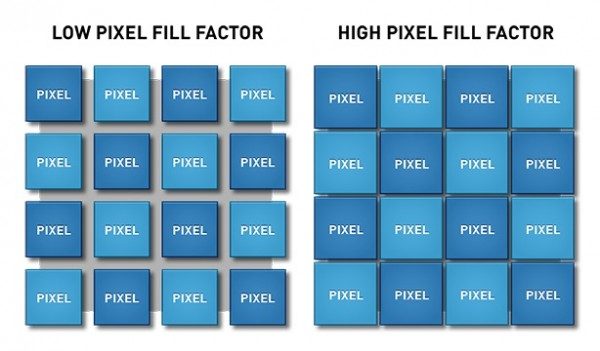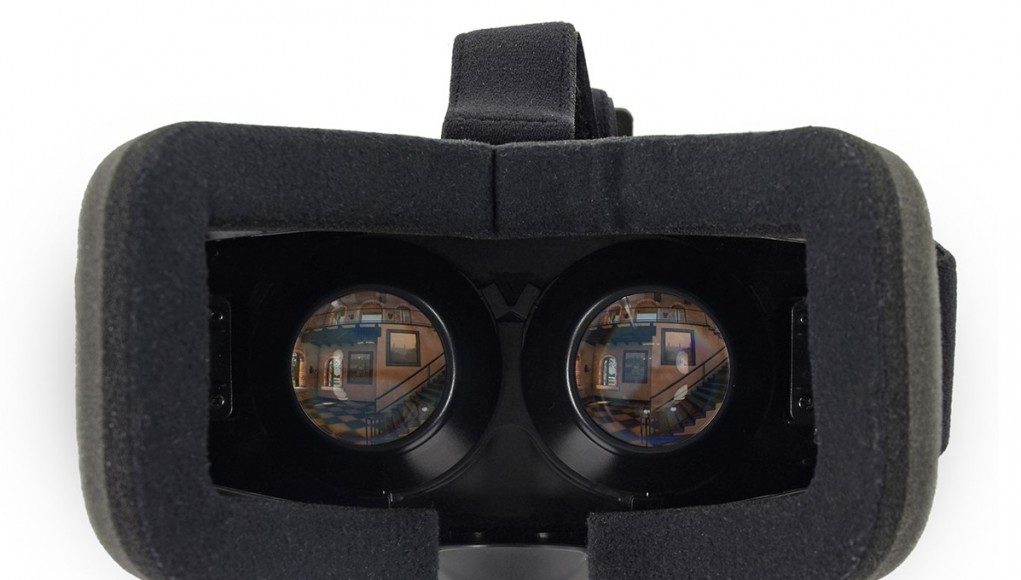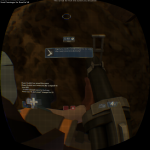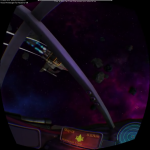
For those who haven’t tried one on for themselves, the question remains—what does it look like in in the Oculus Rift? This article is intended to help answer that question.
VR enthusiast Yossi Preminger put together a series of images which approximate what the of combination of the Oculus Rift’s resolution and the screen door effect. Be sure to view in full size to see the detail:
Of course, there’s only so much that still images through your computer monitor can tell you. For the rest of the details, and an explaination of why the inside of the Oculus Rift looks like it does, read below.
See Also: Head Mounted Display Comparison Chart
What Does it Look Like in the Oculus Rift?
A number of factors contribute to what it looks like inside the Oculus Rift.
Field of View and Head Tracking
The Oculus Rift has a horizontal field of view (HFoV) of approximately 90 degrees in each lens. Total horizontal field of view for humans is close to 180 degrees. The view inside the Rift appears to significantly surround the user (though not completely).
If you turn your eyes away from the center of the screen, it is possible to see the edges. However, when you are focusing on the center of the display, the mind quite effectively ignores blank peripheral spaces and maintains the feeling of being surrounded by the virtual world.
Vertical field of view in the Oculus Rift is even greater, close to 110 degrees. This means it’s difficult to see the top and bottom edge of the screen even when explicitly trying.

Head tracking lets the user look around the virtual world just like they would in the real world. The Oculus Rift head tracker constantly analyzes the player’s head movement and uses it to control the view, instead of relying on a mouse or analogue stick to turn your view in the game. This makes for a completely natural way to observe the world, which is a major factor in immersion.
The high field of view and head tracking lead to the feeling of actually being present in the virtual space, rather than just looking through a small window into a virtual world like most are used to with a monitor or TV.
It can be so immersive that many users of the Rift, myself included, have reported the experience of being ‘transported’ back to reality when removing the Oculus Rift.
Fovea and Variable Acuity Resolution

The Oculus Rift lenses are designed to provide a high field of view and to mimic the way that the human eye naturally functions.
Humans may have a field of view of ~180 degrees, but we can only see fine detail in a tiny portion of it. The rest is low-detail peripheral vision which largely relies on the brain to fill in the blanks and give context to vague colors and shapes (which you can see for yourself by trying any number of simple blind spot experiments).
The part of the eye responsible for this is called the fovea; a small pit in the back of your eye that is densely packed with photosensitive cells, much more so than the surrounding retina. Light that lands in the fovea can be seen in high detail. You can see by the graph on the right how quickly detail drops as light gets further away from the fovea. This less detailed area is your peripheral vision.
It’s easy to see the affect of the fovea for yourself: focus your gaze on the edge of your screen and try to read any of the text in this article from your peripheral vision. Just a few degrees away from the fovea and it’s nearly impossible to read text.
It is because of the fovea that it makes sense to use variable acuity resolution (VAR) on the Oculus Rift.
VAR means that the resolution is not consistent across the display. Technically, the Rift’s display has consistent resolution, but the lenses warp the image, causing a compression of pixels toward the center. This doesn’t noticeably warp the imagine in the Rift because the corresponding virtual scene is warped equally in the opposite direction so that it is projected correctly.
The result is a higher pixel density in the center of the screen and a lower pixel density as you approach the edges of the screen. VAR helps prevent ‘wasted’ detail in your peripheral vision by bunching pixels closer in the area seen by your fovea.
It is for this reason that heads up display elements (like health, ammo, radar, etc.) can be difficult to see at the edges of the display, and why the Oculus Rift is challenging developers to come up with new ways to present that kind of info to the user.
Resolution, Screen Door Effect, and Ghosting
The 7-inch display that the Oculus Rift uses has a resolution of 1280×800. However, it is split down the middle to dedicate one half to each eye (creating the stereoscopic 3D effect). This means that the effective resolution is only 640×800, pretty low by today’s HD standards.
The low resolution is almost always the first thing people comment on when trying the Rift for the first time. Fortunately, thanks to the burgeoning mobile device market, small displays are increasing in resolution independent of the Oculus Rift. Even if the Rift didn’t exist, the development of high resolution mobile displays would continue. It’s for this reason that the Oculus Rift 2.0 (consumer version), is almost certain to ship with a higher resolution display. Many are expecting at least 1920×1080 which would lend itself to an effective resolution of 960×1080—better, but still less than ideal. (Update: Oculus has demonstrated an HD prototype and will be making a second Oculus Rift dev kit which is expected to have a 1080p or higher display).
Then there’s the ‘screen door effect’ which looks like a fine black grid spread out over the image. This happens because of the empty space between pixels—a characteristic of a display known as ‘pixel fill factor’. Most displays that use real pixels (as opposed to projection) have some amount of space between pixels. The particular amount of space determined by the display technology and the sub-pixel structure.

On an LCD display, each pixel is made up of three sub-pixels—red, green, and blue—which are lit at different intensities to make the human eye perceives whichever color is intended for that pixel. The ‘pixel pitch’ or ‘dot pitch’ of a display indicates the distance between subpixels. Higher pixel pitch generally correlates with higher pixel fill factor.
The Oculus Rift’s display has a fairly typical pixel fill factor. However, because it is worn so close to the user’s eyes, the screen door effect becomes quite apparent—you can see this demonstrated effectively in the photos toward the top of the page. This is another area where Oculus hopes to improve for the Oculus Rift consumer version.
Ghosting is caused by slow pixel switching times (how long it takes for the pixels to change colors). Ghosting causes the appearance of faint trails behind moving objects in the virtual scene. When turning your head in the virtual space, the entire scene moves—ghosting causes the scene to blur until you stop moving again.
Ghosting in the Oculus Rift is quite apparent because the display being used has slow pixel switching. Ghosting, like resolution and the screen door effect, is expected to be greatly improved in the Oculus Rift consumer version’s display.
In my experience with the Oculus Rift, the visual issues (low resolution, screen door, and ghosting), seem to melt away once you become immersed in the virtual world around you. Part of this likely has to do with our brain’s ability to ignore information we don’t need and estimate missing information that we can’t actually see. Another part may be that we remember the feeling of an experience much more than we recall the specific visuals.










